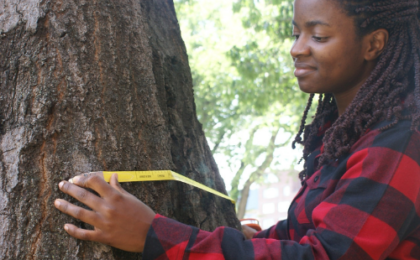PLT’s Forest Literacy Framework charts a pathway to understand the importance of forests as a sustainability solution.
It is important for diverse groups of people to understand the values and benefits of forests. By gaining forest literacy, people acquire the tools and knowledge they need to keep our forests sustainable over the long term, while continuing to benefit from them.
PLT’s Forest Literacy Framework provides a conceptual outline for those who educate young people (in formal or nonformal settings), create education policy or curricula, or advocate for forests. While this framework does not outline specific lessons for teaching about forests, it does suggest sample activities and resources for exploring concepts with various audiences.
Critical thinking, complex systems relationships, and cross-curricular connections surround the tasks of teaching and learning about forests and trees. Forest literacy is a truly interdisciplinary endeavor, with connections to science, social studies, mathematics, health, business, and many other subjects.
Forests provide solutions to many of the world’s most important sustainability challenges. From climate change to water quality and biodiversity, well-managed forests provide viable solutions to achieve measurable environmental, economic, and societal outcomes.
PLT'S FOREST LITERACY FRAMEWORK: EDUCATION, ACCESS, INSPIRATION

Educate Youth
Translate the complex language of forests, trees, and sustainable forest management into concepts appropriate for K–12 learners.

Create Paths for Learning
Focus, simplify, and prioritize the way that important forest concepts are conveyed.

Inspire Future Conservation Leaders
Create informed, engaged, and committed players in the ever-evolving forest story.
Sustaining Forests Through Literacy
As we grapple with environmental challenges like climate change and demand for resources, our forests are more important than ever.
About Forest Literacy
